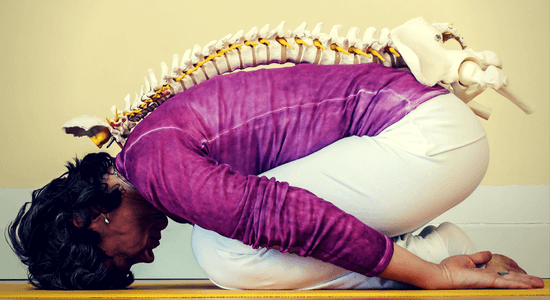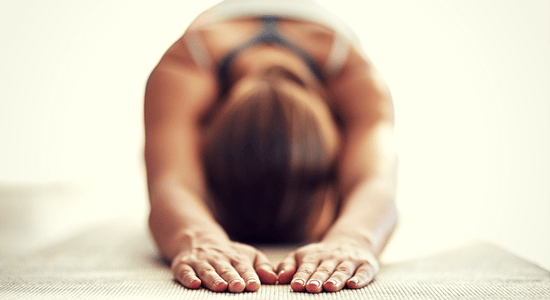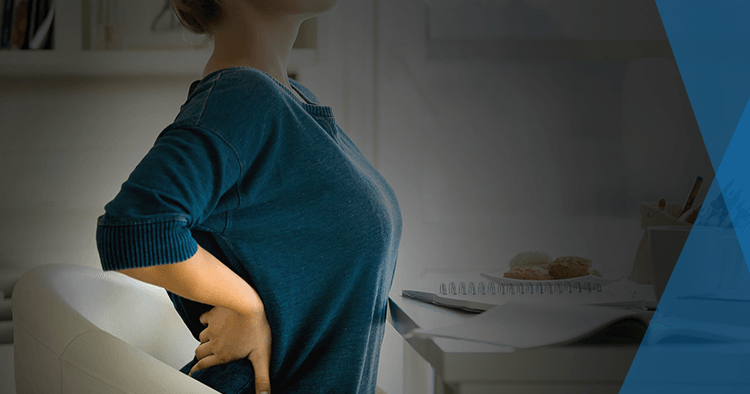As a spine biomechanics professor of over 32 years, I share with you an astonishing fact: Over half of the patients that had been referred to me for back pain were caused by personal trainers!
That is quite an indictment of the results from personal training, but make no mistake, I am the biggest supporter of trainers. Trainers, however, have the potential to be the most important determinant of a person’s lifelong health--perhaps more important than their family doctor, therapist, psychologist, or any other type of clinician. But personal trainers often misunderstand the true mechanics behind back pain.
My recent book, Back Mechanic, contains information that is culled from decades of research in various laboratories and clinics. In it, I provide guidelines to assess the cause of pain, then show the reader what to do, as well as what not to do. Part of what’s discussed are several myths that get perpetuated by the public and personal trainers alike. We dispel those myths and help create the framework for making better clinical decisions.
Here are just a handful of those myths, republished from my book with my own addendums, to make sure that you trainers change people’s lives for the better.
Let's get started.
READ ALSO: The Best Books for Personal Trainers
Myth 1: Back pain is linked to having tight hamstrings
Truth: Our research has found that in most cases, tight hamstrings are a related symptom of back issues rather than a cause. Interestingly, hamstrings often decrease in tightness as back pain subsides. That being said, when one hamstring is tighter than the other, the asymmetry has had mild influences on back pain, particularly in athletes. This book will teach you proper movement patterns for daily activities such as tying your shoes. You will learn that even those of you with tight hamstrings are able to perform such activities while sparing your back.
From a performance perspective, many explosive-type athletes, such as jumpers, need tight hamstrings to store and recover elastic energy. Here the hamstrings are “tuned” rather than stretched (I dive more into this in Ultimate Back Fitness and Performance).
Myth 2: Lying in bed is good for back pain
Truth: In reality, lying in bed for excessive periods actually causes back pain. Let’s examine this more closely. A little known fact is that we are all actually taller first thing in the morning than we are before we go to bed at night. This comes down to our spinal disks. The disks in between each of our vertebrae are packed with very concentrated protein chains that love water. In scientific terms, this means they are “hydrophilic.” When we lie horizontally, the discs fill with fluid and gently push the vertebrae away from one another, lengthening the spine. The reason, our backs are often stiff in the morning is that the discs are so full of fluid, like water balloons ready to burst. When we get up in the morning, and our spines are once again vertical, the excess of fluid in each disc begins to seep out and an hour or two after rising from bed we have returned to our normal heights.

This natural ebb and flow is health and is what allows the discs to obtain nutrition. Problems arise, however, when the spine remains in a horizontal position for too long. While about eight hours in bed is healthy, much longer than that is not as it allows the spine to continue to swell and cause disc pain.
Limiting your time in bed can help with this, as can selecting the right mattress for your back.
Myth 3: My daily workouts at the gym will get rid of my back pain
Truth: The key is doing the right workouts that will preserve your back instead of destroying it. I see patients often perplexed by the fact that they take care of their bodies when an “unfit Joe” they know seems to get by with no back trouble at all.
The truth is that someone hitting the gym every day without spine sparing techniques during their workout, will develop cumulative trauma in their discs. Repeatedly bending your back at the gym, followed by long periods of sitting at work, chased down with poorly executed daily tasks such as getting dressed or gardening conspire together to cause the slow delamination of some of your disc fibers.
“Unfit Joe,” who sits all day, doesn’t experience the same strain on his back that a gym superstar does by aggravating their disc injuries every time they sit. In terms of pain, their spines are better off! The key is not to stop working out! The secret is in changing your default movement patterns so that you can enjoy the benefits of fitness without compromising your back.
Myth 4: Yoga and Pilates are great ways to alleviate back pain
Truth: While many doctors and therapists will suggest this type of exercise to their patients because of its “therapeutic” properties, our studies have not supported these claims and in fact have indicated the opposite. While some poses and movements may be beneficial or feel good at the time, there are components of both exercise systems that will aggravate an individual with back conditions. There is no such thing as an exercise program that is beneficial to all back pain sufferers and to broadly prescribe either yoga or pilates to a patient with undefined back pain is, in my opinion, irresponsible. Every single exercise should be justified and then modified if necessary to suit each person.
One of my major issues with Pilates is that one of its key principles is to flatten the spine and “imprint” the lower back to the floor when lying down. This deliberate effort to disrupt the spine from its neutral position and “straighten” one of its natural curves is not healthy and can trigger pain sensitivity in a person who is already sensitized.
Some people experience a false sense of relief while going through this motion because it stimulates the back’s stretch receptors. In reality, this relief is fleeting and pain symptoms typically return with a vengeance due to the stresses placed on your discs.
Another staple of the Pilates regimen is called the “rollup.” This movement is essentially a sit-up that involves segmentally rolling through each joint of the spine. Our science has justified avoiding sit-ups as part of a routine for a healthy spine and the Rollup essentially takes a bad exercise and makes it worse.
Consider bending a slender branch back and forth. No stress develops. But repeat the bends with a thicker branch and it will crack and break due to the higher stress. This is why stronger people with thicker spines actually create delamination of their disc fibers with fewer bends than a slender-spined person.
Further, training mobility softens the matrix holding the collagen fibers together and decreases the load-bearing ability. Training strength toughens the collagen matrix reducing mobility. Thus, the adaptations are specific, which means that a person must choose between training predominantly spine mobility or spine strength with load- bearing ability. Very few people can have it both ways.
Thus the exaggerated fashion of the Pilates’ rollup puts an emphasis on moving through the spine, putting unnecessary load and strain on the discs. The real goal should be to minimize spinal movement and instead use our hips as primary centers for motion. This philosophy will allow the back pain to settle.

As we’ve already discussed, a therapeutic exercise must be recommended that correlates with the results of a detailed assessment. Many doctors mindlessly suggest Pilates, buying into the unexamined orthodoxy that says Pilates is good for the back. This needs to stop. Don’t get me wrong. There are many Pilates and Yoga instructors I have met taking my clinical courses and have expertise in matching specific exercises to specific people. These instructors are well aware of the importance of avoiding certain pain triggers and adjusting exercises to prevent the worsening of pain.
The bottom line is that if the specific components of Yoga and Pilates are selected and modified for the person doing them, they can help a back patient, but neither of these programs should ever be recommended as a “blanket cure” to all back pain sufferers.
Myth 5: Stronger muscles will cure my back pain
Truth: Therapists often begin strength training early in rehabilitation simply because strength is the easiest attribute to increase and requires very little expertise. Or, curiously they have decided to measure strength as a metric for disability--this is driven by a legal process seeking monetary settlements based on strength loss (or sometimes loss of motion).
Too many patients remain long-term patients because of their misguided efforts to train their back strength. In many cases, their training approach needs an overhaul. Think of strength in relation to the body like horsepower in relation to a car. If a souped-up 500 horsepower engine is put inside a dinky, broken down car and then raced around town at top speed, it’s only a matter of time before the mega-engine rips the frail frame and suspension to piece.
Similarly, a back patient who has developed a disproportionate amount of strength in relation to their current level of endurance can only expect further injury. We have measured this time and time again in strong back patients. Specifically, a resilient back has endurance matched to strength.
Back injuries are a result of putting a spine under load and then breaking healthy movement form. Maintaining proper movement patterns requires endurance. Therefore, we must always place endurance as a higher priority to strength when it comes to rehabilitating a patient with a spine condition. Only after the back-pained person has increased our endurance for sustaining healthy movement patterns, and in turn their stability and mobility, should they progress to more aggressive strength training.
Myth 6: Stretching is good for reducing back pain
Truth: Although stretching is considered universally beneficial for back pain sufferers, this is an old-fashioned notion that needs challenging.
There is no such thing as a stretch that is good for all patients, just as there is no such thing as a single source of pain. Each back pain case is different, and as such each stretch must be chosen very, very carefully and tailored to the individual. Too often, therapists prescribe stretches that are totally wrong for a patient often with the ultimate goal of improving mobility in the spine. For most back pain sufferers, this is the opposite of what they should be doing in order to gain control of their backs.
Physiologically, pulling your knees to your chest, or other similar stretches, trigger the “stretch reflex.” This is a neurological phenomenon that reduces pain sensitivity. This provides about 15-20 minutes of pain relief for some, making it a short-term fix. The problem is that in putting in your spin in this position, you are aggravating your discs and after you’ve experienced temporary relief, the pain will return, often worse than before. Thus begins a vicious cycle with a misinformed back patient who thinks their only solution to pain is to “stretch it out,” not realizing that this is in fact contributing to their pain. The key is to stop the cycle!
Instead of focusing your energy on stretches that bend the spine, turn instead to stabilizing and controlling the spine. Follow the self-assessment of the pain triggers shown in Back Mechanic. Modifying your daily movements to keep your spine in postures that do not trigger pain, which for most people is “neutral.” In following this path to recovery, your discs will experience less strain, your pain will subside and your mobility will return!
Essentially, when dealing with stretches with back pain, avoid those that involve pulling your knees to your chest. Your pain triggers will de-sensitize faster.
Myth 7: Having a powerful back is protective
Truth: Power is the product of velocity and force. So high power is generated when quickly bending the spine together with a forceful exertion. Generating power in the spine is highly problematic, as it increases the risk of injury. Let’s break it down. If spine movement or bending occur at a high velocity, the forces (or load) on it must be low in order to avoid injury. For example, the golf swing has high velocity but low force.
Alternatively, if the force being placed on the spine is high, then the velocity must be kept at a low level in order to maintain a low risk of injury–think the deadlift. Essentially, the risk of back injury can be controlled by keeping spine power low.










